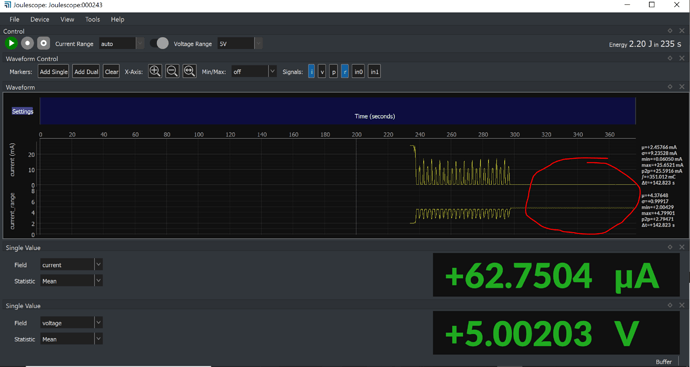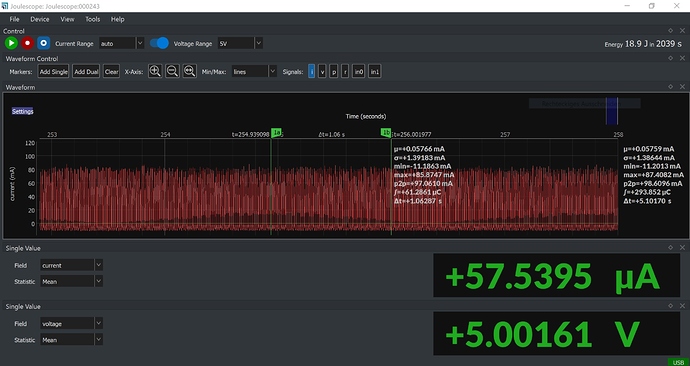Hi @Dominik,
Thank you for posting the two jls files. The 180 µA fixed range capture clearly shows that the target device draws more than 200 µA causing the measurement to saturate:
The saturation occurs at 200 µA, and the idle current is 21 µA. The saturation lasts for 688 µs and occurs approximately every 7 ms. It also has a very nice RC decay [see Wikipedia]. τ occurs when the value crosses
(1 - 0.632) * (200 - 21) + 21 = 86.8 µA
I measure τ = 602 µs
Now, we know that Joulescope uses a 111 Ω shunt resistor in the 180 µA range, so your target capacitance is:
τ = R * C
602 µs = 111 Ω * C
C = 5 µF
If we assume that the pulse is infinitely short, we can project back the RC decay curve to estimate your actual maximum current:
1 / e ^ (-688 µs / 602 µs) * (200 - 21) µA + 21 µA = 582 µA
We also know that your device experienced a voltage drop of
V = 111 Ω * 582 µA = 65 mV
which is 1.3% (not too bad) given your 5V supply.
Let’s take a look at the autoranging capture. We see the same events occurring approximately every 7 ms:
Zooming in on these events reveal that they are really short.
The duration is so short that they exceed Joulescope’s autoranging bandwidth, which is another way of saying that you will not see a clear picture of the actual pulse with autoranging on. To get a clear picture of the pulse, you should set the smallest fixed range that does not saturate. You can find a similar discussion here. While in the fixed range, make sure that you never see a pulse exceeding that fixed range’s value. If you do, try the next range up.
As you move to less sensitive current ranges, your system’s measurement bandwidth also increases, which means that the RC decay will be much reduced, but your instantaneous current will also increase.
If you want, I am happy to take a look at this fixed range capture. You can consider adding capacitance to your target to get better measurements. I normally recommend at least 10 µF, but I am happy to recommend a value for your system based upon the fixed range capture.








